Subsistence refers to how people obtained the calories which are needed to sustain life. Subsistence patterns are determined, in part, by the environment and the resources within that environment. In general, Southern California Indians have been classified as hunters and gatherers, meaning that they tended to obtain food from hunting and from gathering wild plants.
Often evidence of agriculture—the deliberate planting and harvesting of foods—has been overlooked by non-Indian researchers. In his entry on the Cahuilla in the Handbook of North American Indians, Lowell Bean reports:
“Proto-agricultural techniques existed among the Cahuilla. Corn, beans, squashes, and melons of the types used by neighboring Colorado River tribes were most commonly raised.”
One of the displays in the Riverside Metropolitan Museum in Riverside, California, looks at the Southern California Indian tools of life. According to the display:
“From acorns to willow, life for Southern California Native Americans depended on hunting and gathering seasonal and local foods. Coastal and desert peoples used baskets, nets, and digging sticks to gather plants, while traps and rabbit sticks were used to hunt small animals. Along the coast, canoes made of dugout trees created opportunities for hunting and fishing, as well as travel. The objects seen here as tools of life, used by local peoples to survive and flourish.”
One of the mainstays of the diet for the region was the acorn which was used in soup, porridge, and bread. There are a number of steps involved in gathering and processing the acorns. They are gathered in September and October. Traditionally, the people gathered the acorns by climbing the tree and then beating off the nuts with a long slender pole. Harvesting would take place over a fairly short period of time, about two or three weeks.
The acorns which are collected have white bottoms and no insect holes. The acorns are then dried in their shells, a process which takes anywhere from a few weeks to a few months. During this time, the acorns are stirred to increase air circulation and encourage drying.
Once dry, the acorns are cracked to remove the nutmeat. This was traditionally done with a small, handheld stone pestle. The acorns are then ground or pounded into acorn flour. The flour is pounded as fine as possible. Once the acorns are ground into flour, they are then leached. Acorns contain tannic acid which is very bitter, and which is poisonous in large amounts. The leaching process removes the tannic acid from the acorn flour.
With regard to the importance of the acorn, anthropologist James Downs, in his chapter on California in North American Indians in Historical Perspective, puts it this way:
“This natural crop above all others probably contributed to the fact that California peoples did not experience annual famine months or develop traditions or legends dealing with famine.”
In her book America Before the European Invasions, Anthropologist Alice Beck Kehoe notes:
“Westerners also noticed that the acorn oaks so important to most California Indians tended to grow in regular rows near villages, without realizing that they had been planted as orchards.”
In some tribes, a typical family might consumer 1,000 to 2,000 pounds of acorns per year.
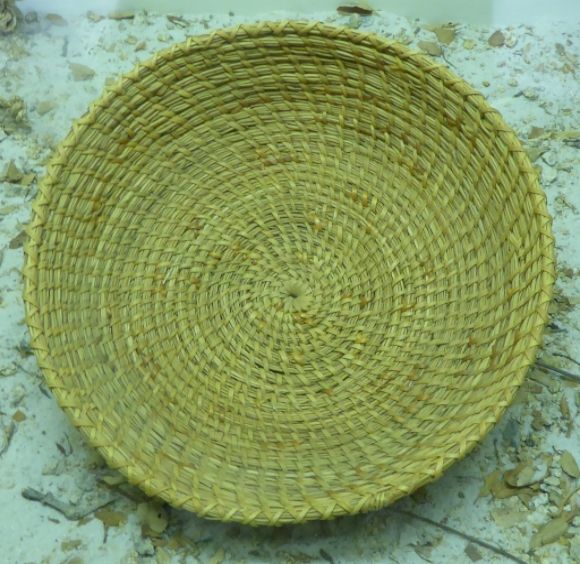 Shown above is a Cahuilla leaching tray made about 1900. Trays like this were used in the preparation of acorn flour.
Shown above is a Cahuilla leaching tray made about 1900. Trays like this were used in the preparation of acorn flour.
Many of the foods obtained from plants had to be processed. Lowell Bean reports:
“Grinding acorns and dried berries was done in stone mortars with stone pestles; stone manos were rolled on stone metates to grind hard seeds as well as soft foods like piñon nuts; and wooden mortars were used to pulverize soft, fibrous foods like honey mesquite.”
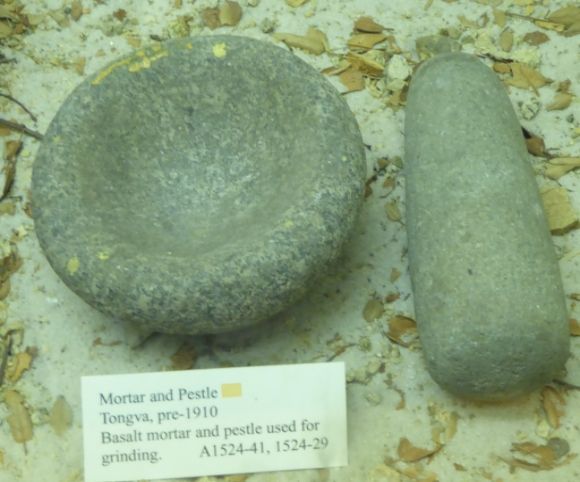 Shown above is a Tongva mortar and pestle which was used for grinding seeds and nuts. These were made prior to 1910.
Shown above is a Tongva mortar and pestle which was used for grinding seeds and nuts. These were made prior to 1910. 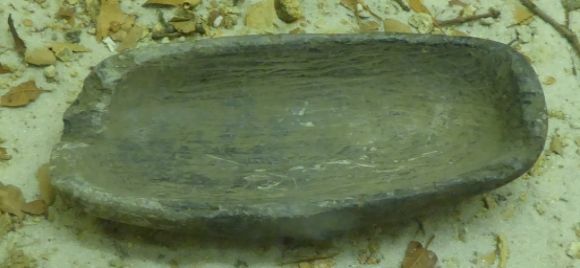 Shown above is an early twentieth century Luiseño steatite mortar.
Shown above is an early twentieth century Luiseño steatite mortar. 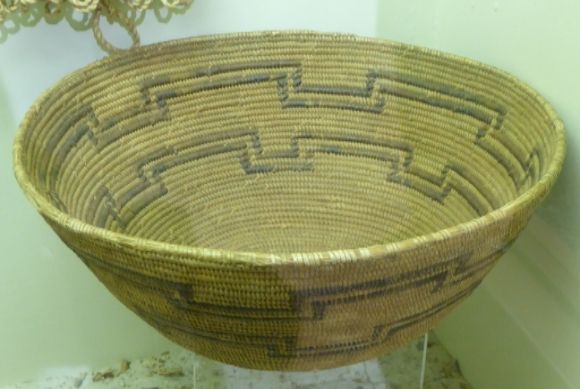 Shown above is Luiseño gathering or storage basket.
Shown above is Luiseño gathering or storage basket. 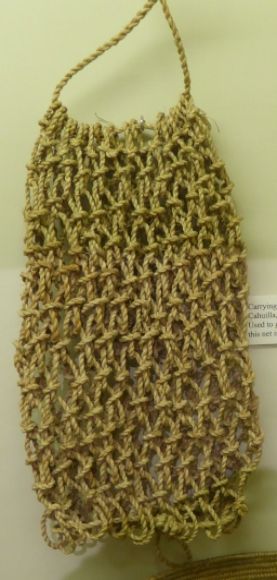 Shown above is a Cahuilla carrying net which was used to gather food such as cactus pads. This net, made about 1900, was made from milkweed fibers.
Shown above is a Cahuilla carrying net which was used to gather food such as cactus pads. This net, made about 1900, was made from milkweed fibers. 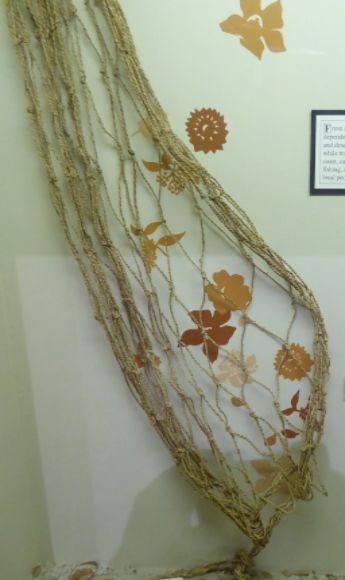 Shown above is a Cahuilla carrying net made between 1890 and 1910. This net was made from yucca or agave fibers.
Shown above is a Cahuilla carrying net made between 1890 and 1910. This net was made from yucca or agave fibers. 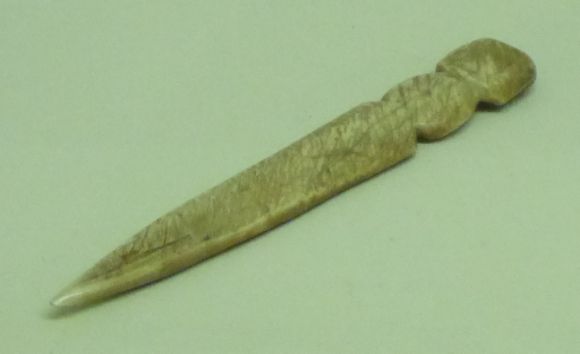 Shown above is a pre-1910 Kumeyaay awl which would have been used in basketry and in making holes in leather and other materials.
Shown above is a pre-1910 Kumeyaay awl which would have been used in basketry and in making holes in leather and other materials.
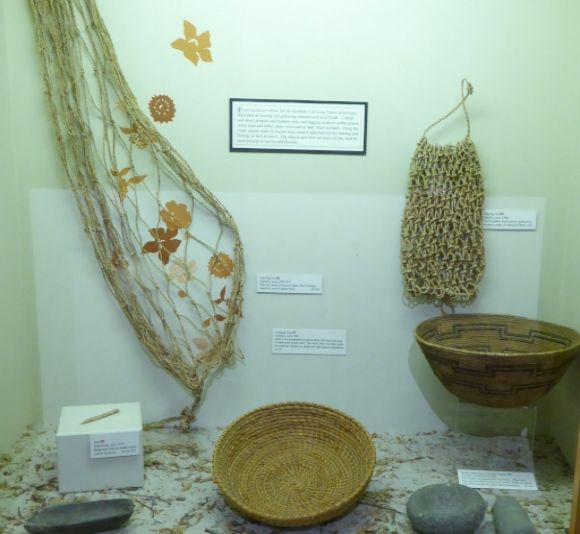
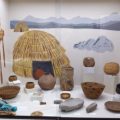
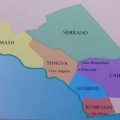
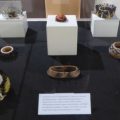
Leave a Reply